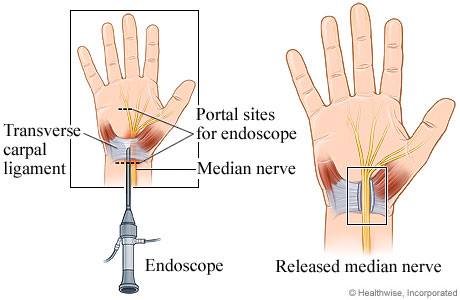
Do you wake up with pain and numbness in your thumb, index or long fingers? Does your hand fall asleep while you’re driving? Are you losing your grip? You may have Carpal Tunnel Syndrome.
In Carpal Tunnel Syndrome or CTS, the soft tissue in the wrist swell and compresses the Median Nerve, causing pain, numbness and, eventually, permanent nerve damage. This swelling can be due to over-use of the hand, as with excessive computer mouse work, or systemic factors like diabetes or thyroid disease.
Treatment of CTS starts with oral anti-inflammatories like Ibuprofen and splinting the wrist. If these simple measures don’t help, steroid injections may bring the swelling down and take pressure off the nerve. But when these steps don’t work, surgery is probably necessary.
Your doctor may ask for nerve conduction studies to document the compression of the nerve in the wrist. Sometime x-rays are helpful. If surgery is necessary, there are two options: open and endoscopic.
The open technique involves cutting the skin of the palm and dividing the carpal ligament–releasing it–to give the nerve more room. With the endoscopic technique, a tiny video camera with a blade attached is inserted into the carpal tunnel through a small incision in the wrist. Then the carpal ligament is released from the inside. The endoscopic release cuts healing time from the usual 4-6 weeks with the older open operation to 2-3 weeks.
If you’ve never before had surgery or trauma involving your wrist, endoscopic carpal tunnel release is the way to go. That’s the way I had mine done.


